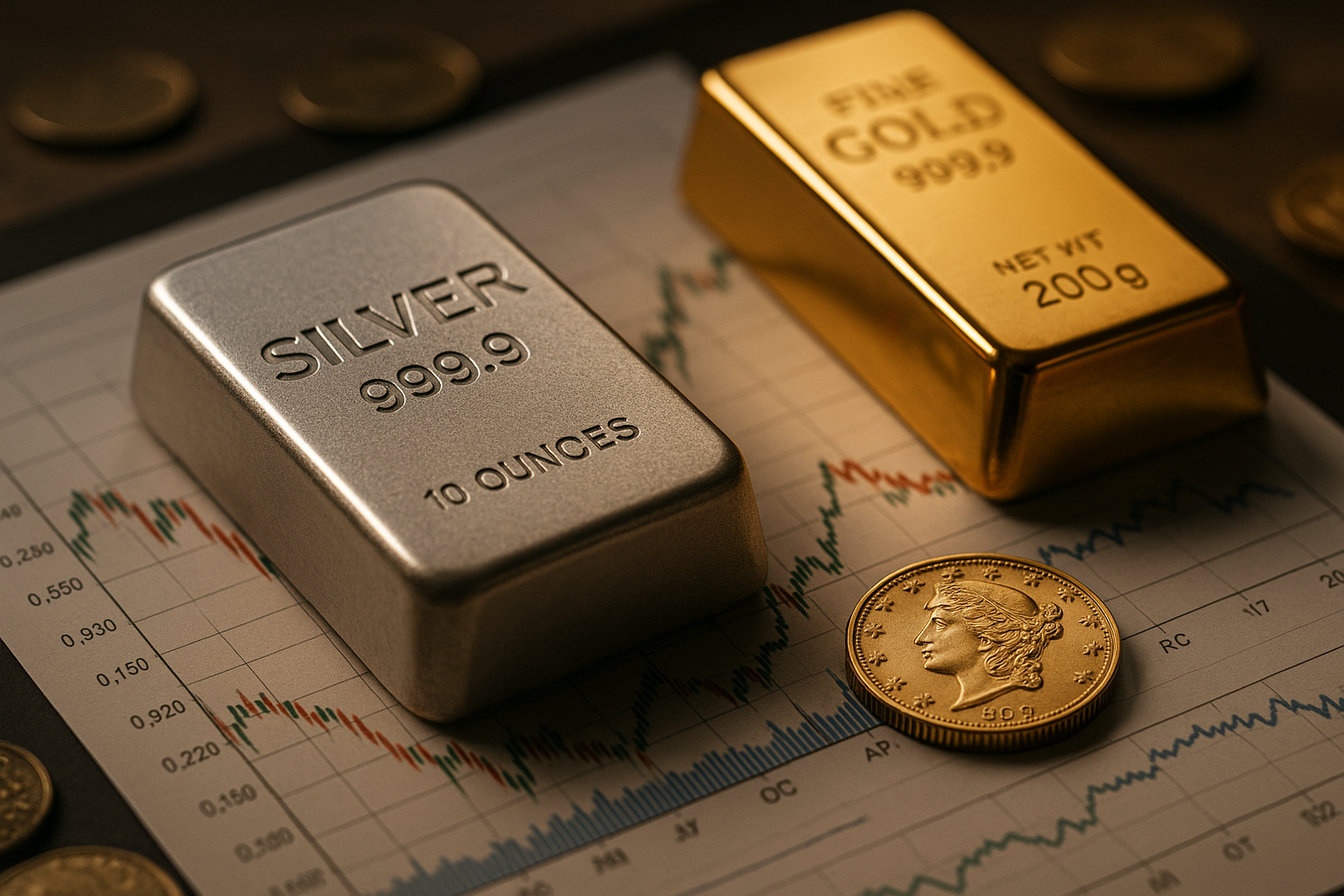Will The Silver Boom Charge Higher?
Artificial intelligence is creating strong new demand for silver.Electric vehicles and advanced batteries are driving it even further.Get the point?Silver has long been a key part of the green revolution — but now, a new combination of global forces is quietly reshaping the market.In this article, you’ll find a clear, fact-based guide on how people can realistically take part in this growing trend.

Silver occupies a unique position in global markets, serving dual roles as an industrial commodity and a store of value. Unlike gold, which is primarily used for jewellery and investment, silver’s extensive industrial applications create demand dynamics that respond to technological innovation and economic cycles. Recent price movements have sparked renewed interest among investors seeking diversification and exposure to metals markets. Understanding the fundamentals behind silver’s performance helps investors make informed decisions about whether this metal deserves a place in their portfolios.
Understanding Silver’s Role in Modern Technology
Silver’s exceptional conductivity, reflectivity, and antimicrobial properties make it indispensable across numerous industries. The metal plays a critical role in solar panel manufacturing, with photovoltaic cells requiring silver paste for electrical connections. As renewable energy adoption accelerates globally, demand from this sector continues growing. Electronics manufacturing represents another major consumption area, with silver appearing in smartphones, computers, and automotive systems. Electric vehicles contain significantly more silver than traditional combustion engines, driven by increased electronic components and battery management systems. Medical applications leverage silver’s antimicrobial properties in wound dressings, coatings, and equipment. This industrial demand creates a fundamental support level for silver prices, distinguishing it from purely monetary metals. However, technological substitution remains possible if prices rise sufficiently to incentivise alternatives, creating complex supply-demand dynamics.
Practical Ways to Get Exposure to Silver
Investors can access silver markets through several channels, each offering distinct characteristics. Physical silver includes coins, bars, and bullion, providing direct ownership but requiring secure storage and insurance. Premiums above spot price vary based on product type and dealer, with smaller denominations typically carrying higher percentage markups. Exchange-traded funds offer convenient exposure without physical storage concerns, tracking silver prices through holdings of physical metal or futures contracts. Mining company shares provide leveraged exposure to silver prices, as operational costs remain relatively fixed while revenues fluctuate with metal prices. However, mining equities introduce company-specific risks including management quality, operational challenges, and jurisdictional factors. Silver futures and options contracts allow sophisticated investors to take positions with leverage, though these derivatives require understanding of contract specifications and margin requirements. Pooled accounts and allocated storage services offer alternatives for those seeking physical ownership with professional custody arrangements.
What Realistic Returns Look Like
Silver exhibits higher price volatility than gold, creating both opportunities and risks for investors. Historical data shows silver can deliver substantial gains during bull markets, often outperforming gold on a percentage basis. However, the metal also experiences sharp corrections and extended periods of stagnation. Over multi-decade timeframes, silver has preserved purchasing power but has not consistently outpaced diversified equity portfolios. Realistic expectations should account for silver’s cyclical nature, with performance heavily influenced by industrial demand, monetary policy, and investor sentiment. The gold-to-silver ratio, measuring how many ounces of silver equal one ounce of gold, fluctuates between approximately 40:1 and 100:1 historically, providing context for relative valuation. Investors should view silver as a portfolio diversifier and inflation hedge rather than a primary wealth-building vehicle. Position sizing matters significantly, with most advisors suggesting precious metals comprise no more than 5-10% of balanced portfolios. Short-term trading silver requires technical analysis skills and risk management discipline, as price swings can be dramatic.
Key Risks and How to Manage Them
Several risks warrant consideration when investing in silver. Price volatility exceeds that of many asset classes, with double-digit percentage moves occurring within weeks or months. Industrial demand sensitivity means economic slowdowns can pressure prices, particularly if technological substitution accelerates. Storage and insurance costs erode returns for physical holdings, while management fees impact ETF performance. Counterparty risk exists with pooled accounts and some financial products if providers face solvency issues. Regulatory changes affecting mining operations, import duties, or investment vehicles can alter market dynamics. Currency fluctuations matter for international investors, as silver trades in US dollars globally. Liquidity varies across products, with physical silver sometimes difficult to sell quickly at fair prices in local markets. Managing these risks involves diversification across silver investment types, maintaining appropriate position sizes, using reputable dealers and custodians, and establishing clear entry and exit criteria. Regular portfolio rebalancing prevents silver allocations from growing disproportionately large during price rallies. Understanding tax treatment of different silver investments helps optimise after-tax returns, as physical metals may face different rules than financial instruments.
Final Thoughts: Responsible Participation in the Silver Market
Silver offers genuine diversification benefits and exposure to industrial megatrends, but success requires realistic expectations and disciplined approach. The metal’s dual nature as industrial commodity and monetary asset creates unique characteristics that distinguish it from other investments. While technological demand provides fundamental support, price movements remain influenced by speculation, macroeconomic conditions, and investor psychology. Those considering silver exposure should research thoroughly, understand the specific vehicles they use, and maintain perspective on the metal’s role within broader financial plans. Responsible participation means sizing positions appropriately, avoiding excessive leverage, and recognising that silver performs best as part of diversified portfolios rather than concentrated bets. Whether silver charges higher depends on numerous factors including economic growth, monetary policy, technological innovation, and market sentiment. Rather than attempting to predict short-term movements, investors benefit from understanding the metal’s characteristics and determining whether its risk-return profile aligns with their objectives and risk tolerance. Silver investing rewards patience, discipline, and willingness to weather volatility in pursuit of long-term diversification benefits.




